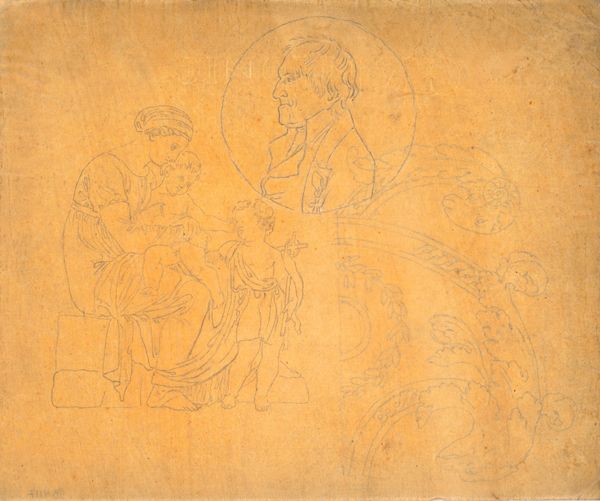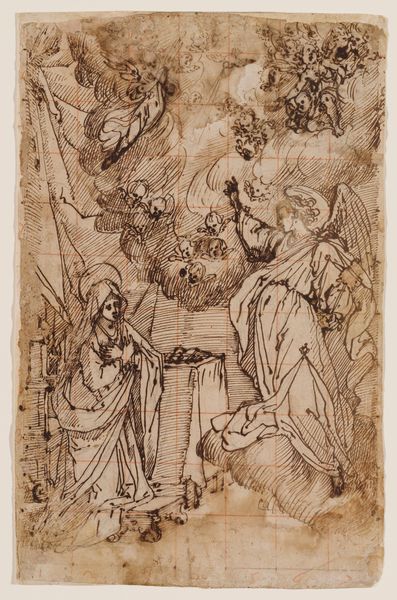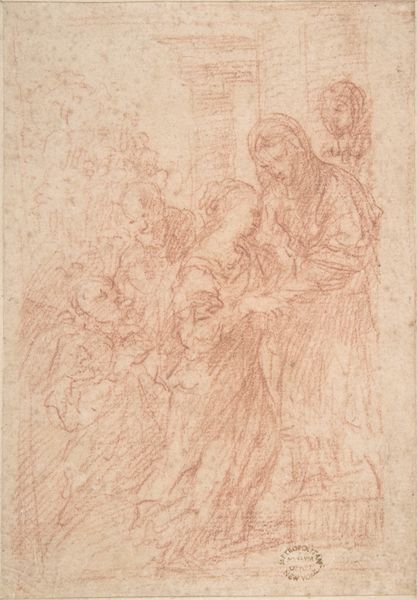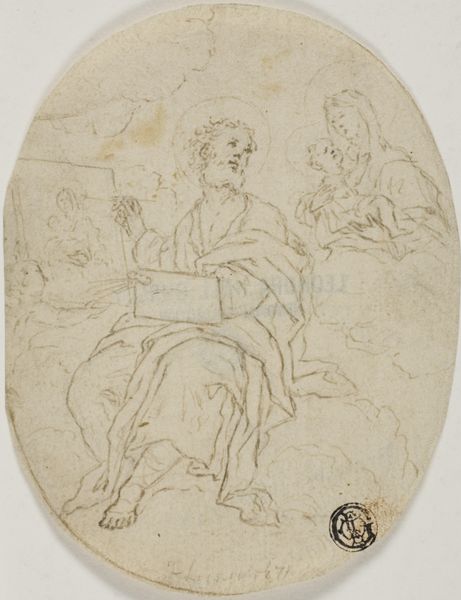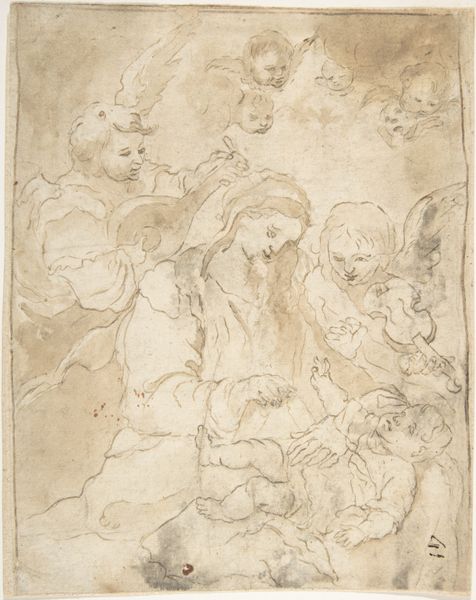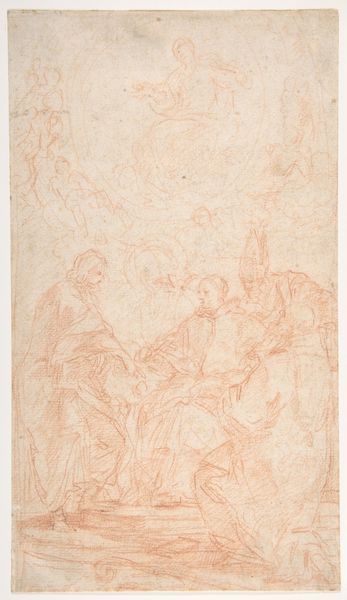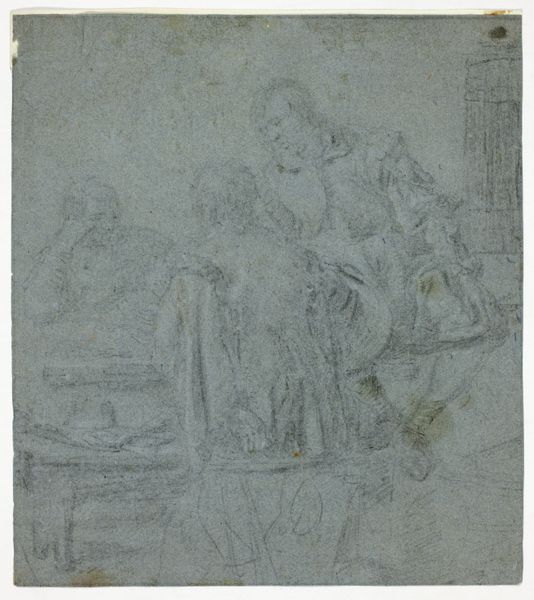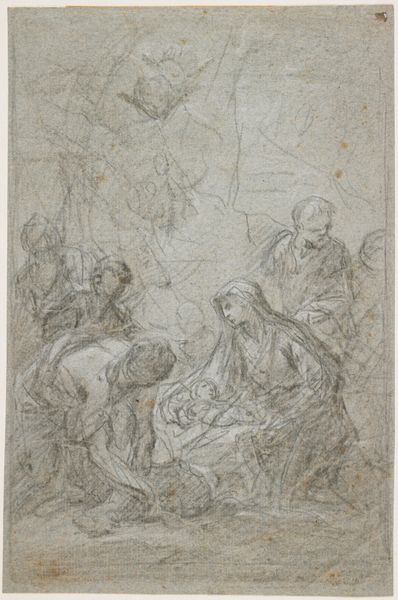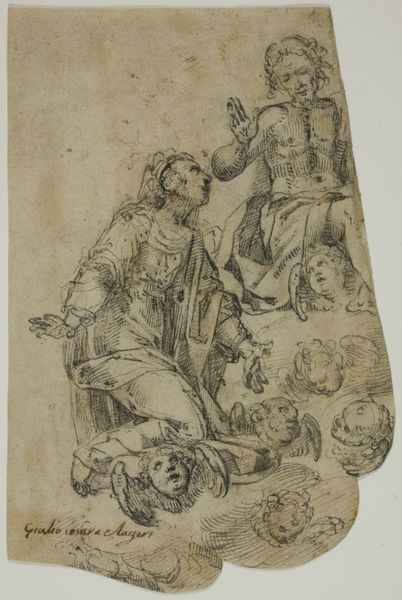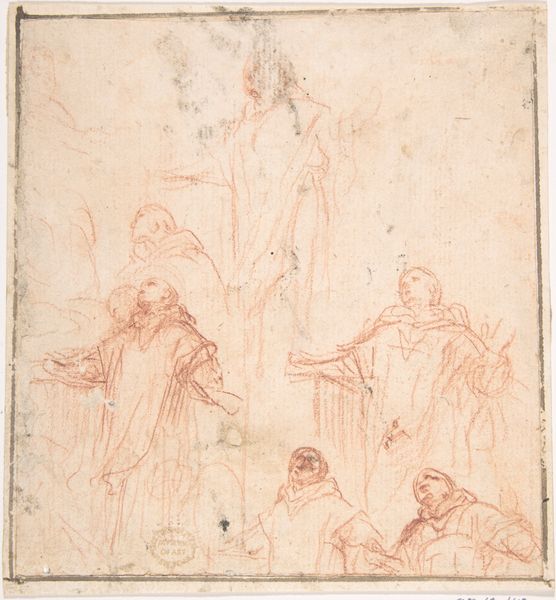
drawing, print, paper, chalk, graphite
#
portrait
#
drawing
#
ink painting
# print
#
figuration
#
paper
#
chalk
#
graphite
#
history-painting
#
italian-renaissance
Dimensions: 389 × 304 mm
Copyright: Public Domain
Curator: Take a moment to consider Francesco Albani’s "Holy Family with Two Angels," created circa 1609-1610. It’s a study rendered in chalk, graphite, and ink on paper and part of the collection at The Art Institute of Chicago. What’s your initial impression? Editor: Sparse. Yet even with the visible sketched lines and preparatory quality, a profound sense of tenderness and intimacy emerges. I am immediately struck by the quiet expressions and soft poses. The whole scene whispers of divine care. Curator: That’s an astute observation. Now, think about how artistic patronage during the Italian Renaissance deeply entwined with the power structures of the time. Works like this not only served devotional purposes but also reinforced certain socio-political ideologies related to family, gender roles, and piety. How does this unfinished work resonate or clash with these dominant narratives? Editor: The incompleteness itself, the sketch-like quality, is fascinating. The exposed marks and unfinished sections offer an honest and accessible glimpse into its creation, suggesting the fragile nature of life and the enduring human pursuit of divinity. The image feels surprisingly human in its incompleteness. It also echoes a yearning for perfection we often see associated with familial ideology. Curator: Indeed. Consider, too, that in art history, representations of the Holy Family are so much about projecting normative societal expectations onto the idealized family. Mary’s figure here, while maternal, is notably idealized and somewhat removed. Her body, her pose... What social messages about the role of motherhood might that project in Albani’s time, and perhaps even still today? Editor: The angels play a significant role in this cultural communication, each with a visual purpose that’s been established over centuries: divine approval. Their very presence reinforces the sanctity and importance of the family portrayed. You know, even unfinished, this visual vocabulary tells the same rich symbolic stories. Curator: And thinking of contemporary cultural and political interpretations: Does this artwork, in its very creation and composition, challenge traditional gender roles by depicting the intimate bonds within a family, offering alternative models beyond established conventions? Editor: Perhaps the quiet introspection is precisely what humanizes these figures and shifts the artwork’s interpretation beyond a strict reading of normative conventions. It’s less about challenging, and more about revealing inner humanity within a fixed trope. Curator: It's this dynamic tension, I think, between societal expectations and a sense of deeper human emotion that makes Albani’s "Holy Family with Two Angels" a continually rewarding artwork to engage with. Editor: Absolutely. For me, the power lies in its invitation to remember the timeless echoes and reverberations within a single image.
Comments
No comments
Be the first to comment and join the conversation on the ultimate creative platform.
